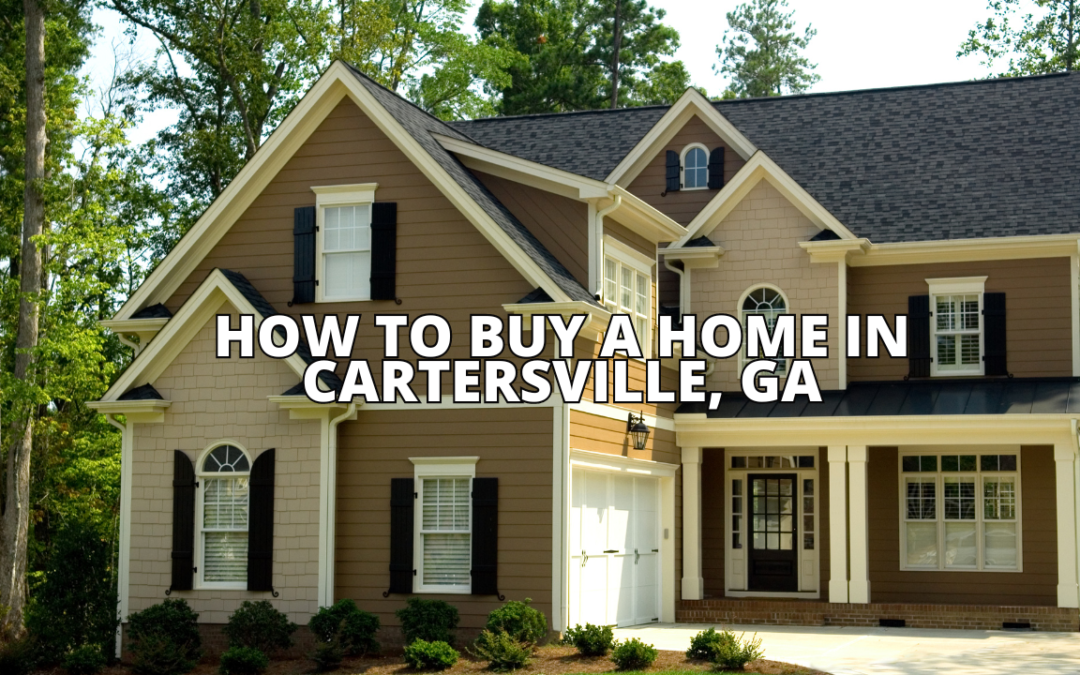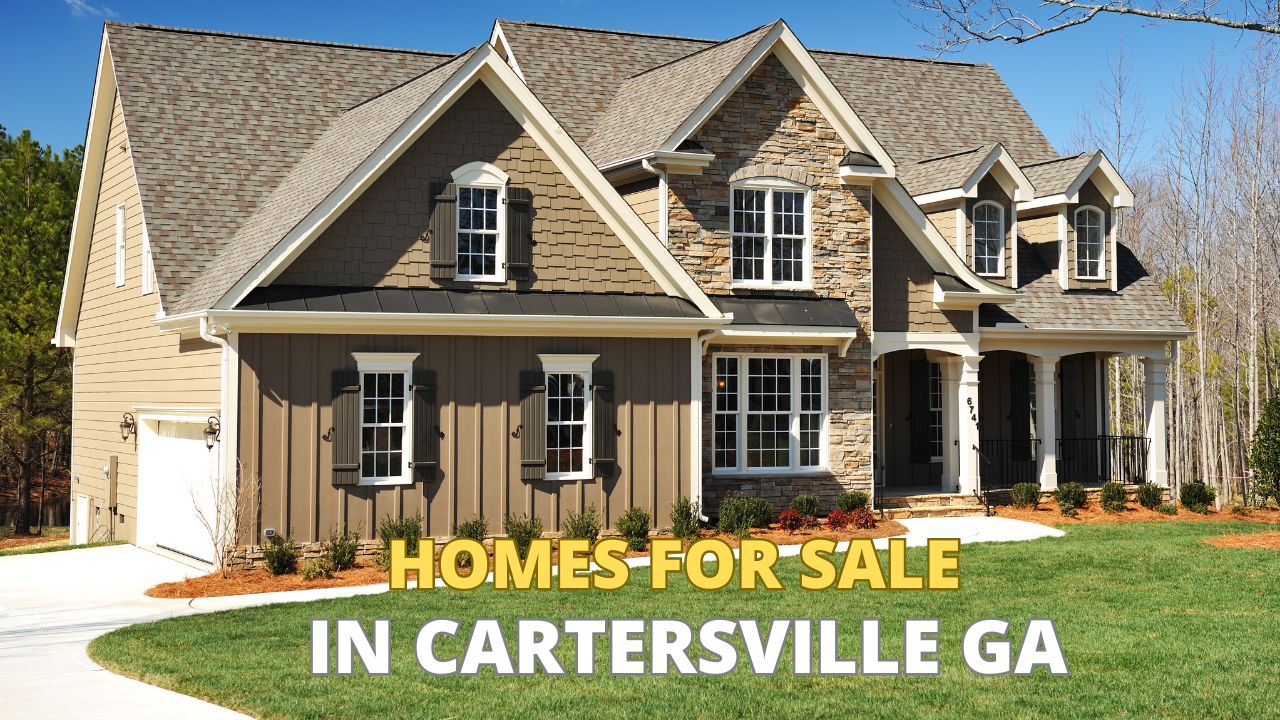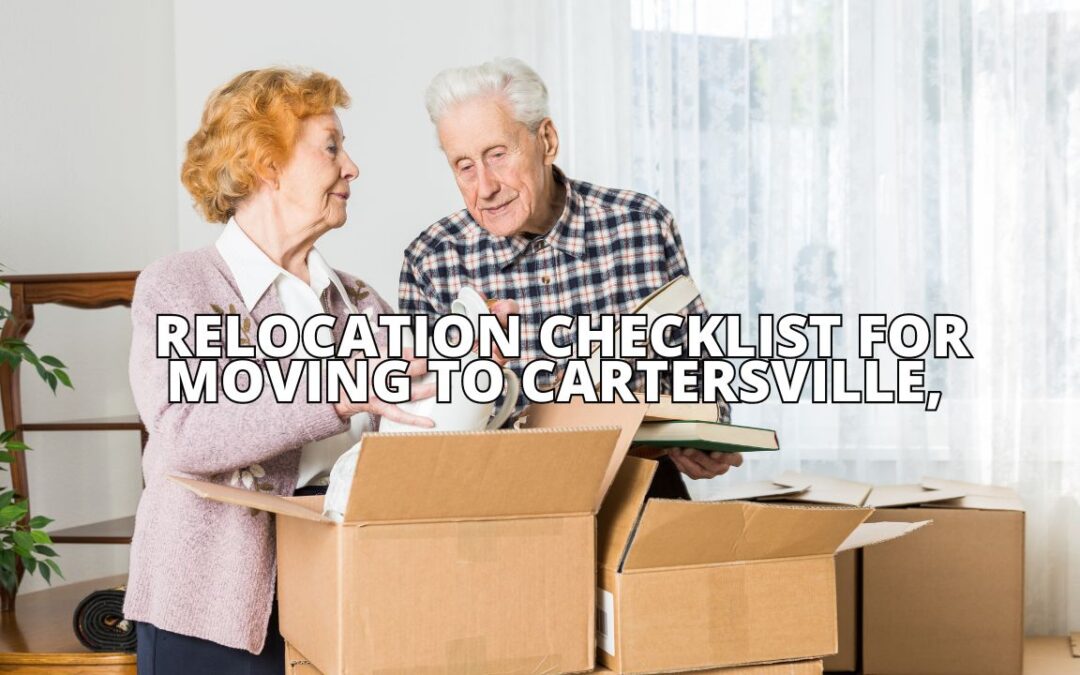Move to a Single-Story home and Simplify Life in Cartersville, GA
Selling a home in Cartersville and moving to a single-story property can seem daunting, but it doesn’t have to be. Understanding the local real estate market and preparing your home properly can significantly smooth the process. With the right approach, homeowners can attract buyers and secure a good sale price, paving the way for their next chapter in a comfortable single-story home.
As potential buyers often look for homes that meet their needs, marketing with attention to detail is essential. This includes showcasing the unique features of a Cartersville home while also highlighting the benefits of living in a one-level property. Careful negotiation and closing practices further ensure that sellers can transition seamlessly into their new living space.
Once sold, the moving process can be streamlined with good planning, helping homeowners adapt to their new environment. The journey from a multi-story to a single-story home can be an exciting change, offering convenience and ease of living.
Key Takeaways
- Knowledge of the local market helps in setting the right price for a home.
- Effective marketing can draw more potential buyers to a property.
- A well-organized moving process makes adapting to a new home smoother.
Understanding the Cartersville Real Estate Market
Cartersville’s real estate market has shown significant growth. In June 2024, home prices rose by 18.9% compared to the previous year. The median price for homes reached $355,000.
Homes are selling faster now. The average time on the market is 16 days, down from 20 days last year. This indicates high demand among buyers.
In June 2024, 28 homes were sold, a decrease from 35 homes sold in June 2023. Despite fewer sales, the increased prices suggest buyers are willing to invest more in homes.
When selling a home in Cartersville, it’s essential to be aware of market trends. Matching the price and quality of nearby properties can attract potential buyers quickly.
Buyers need to note that single-family homes are currently selling for about 2.4% below their list price. This information helps in making informed offers.
Overall, understanding these trends can help sellers position their homes effectively. They can capitalize on the current market conditions to achieve better sales outcomes.
For a detailed analysis, Schedule a 15-minute call. We will provide you with valuable insights into the local market conditions. This knowledge is crucial for anyone looking to navigate the Cartersville housing market successfully.
Preparing Your Home for Sale
Getting a home ready for sale involves key steps. The focus should be on decluttering, making necessary repairs, and staging the space to appeal to potential buyers. Each step plays a crucial role in attracting offers.
Decluttering and Depersonalizing
Decluttering is the first step in preparing a home for sale. This involves removing excess belongings and personal items. Buyers want to envision themselves in the space, so it is vital to create a neutral environment.
Start by clearing surfaces like countertops and tables. Remove personal photos and memorabilia. It’s a good idea to pack away seasonal items and extra furniture.
Tips for Decluttering:
- Sort items: Keep, donate, or discard.
- Focus on high-traffic areas: Living rooms, kitchens, and bathrooms need particular attention.
A clean, uncluttered space gives the impression of a larger area. This can significantly enhance the home’s appeal.
Home Repairs and Improvements
Next, focus on necessary repairs and improvements. Taking care of minor issues can make a home more attractive. Common areas to inspect include:
- Walls: Patch holes and apply a fresh coat of paint in neutral colors.
- Fixtures: Check light fixtures and faucets for proper function and update if needed.
- Landscaping: Curb appeal matters. Trim hedges, mow the lawn, and plant flowers for added charm.
Investing time in these improvements can yield a higher return when selling. It shows buyers that the home is well-maintained.
Staging Your Home to Sell
Staging involves arranging furniture and decor to highlight the home’s best features. A staged home enables buyers to visualize their future in the space.
Key staging tips include:
- Arrange furniture: Create inviting pathways and focus on natural lighting.
- Add accessories: Use neutral decor items like pillows and artworks that appeal to a broad audience.
Consider hiring a professional stager for optimal results. Understanding how to accentuate each room’s purpose can lead to a quicker sale.
By focusing on these areas, sellers can significantly enhance the appeal of their homes and attract more buyers.
Determining Your Home’s Value
Knowing the value of a home is essential before selling. This involves getting an appraisal and conducting a comparative market analysis. Setting the right price is also crucial to attract buyers. Find out how much your home is worth today!
Appraisal and Comparative Market Analysis
An appraisal provides an official value of the home, conducted by a licensed appraiser. They consider various factors, such as the property’s condition, the local market, and comparable sales in the area.
A comparative market analysis (CMA) involves evaluating similar homes that have recently sold. This helps identify market trends and pricing strategies tailored to Cartersville. Real estate agents often conduct CMAs to help sellers understand where their property stands.
Both methods provide valuable insights, ensuring the homeowner has a clear understanding of their home’s worth.
Setting a Competitive Listing Price
Setting a competitive listing price is key to selling a home quickly. Sellers should consider the CMA findings, appraisal results, and current market conditions. They should aim for a price that attracts buyers while reflecting the home’s true value.
Tips for Setting a Listing Price:
- Research similar properties: Look for homes that are priced similarly and how quickly they sold.
- Consider seasonal trends: The market can fluctuate based on the season.
- Adjust for unique features: Take into account any upgrades or special characteristics of the home.
A well-priced home generates interest and can lead to multiple offers, which is beneficial for the seller.
Marketing Your Cartersville Home
Effective marketing strategies are essential for selling a home in Cartersville. By focusing on high-quality visuals, smart online listings, and engaging open houses, homeowners can attract more potential buyers.
High-Quality Photography
High-quality photography plays a crucial role in attracting potential buyers. Professional photos highlight the best features of a home. Natural light and well-composed shots can make spaces appear larger and more inviting.
Homeowners should consider staging rooms before the photo shoot. Clean, decluttered spaces look more appealing. Including images of both the interior and exterior is vital. Capture outdoor spaces like gardens or patios, as they can enhance appeal.
Investing in video tours can provide an immersive experience. Drones can showcase the property’s surroundings and nearby amenities.
Online Listing Strategies
Creating a robust online listing is key to reaching a wide audience. Homeowners should use multiple platforms to increase visibility. Websites like Zillow, Redfin, and local MLS listings are effective for reaching buyers.
The listing should include an appealing description that highlights unique features. Mention nearby schools, parks, and community amenities. Use keywords that resonate with potential buyers, such as “family-friendly” or “move-in ready.”
Having a clear pricing strategy is important. Researching comparable homes in Cartersville can help determine an appropriate asking price. This ensures the property attracts interest without undervaluing it.
Hosting Open Houses and Private Showings
Open houses and private showings can boost interest in a home. Hosting a well-planned open house allows potential buyers to envision living there. Providing refreshments and printed materials, such as property facts, can create a welcoming atmosphere.
During private showings, the homeowner should highlight key features. Being available to answer questions fosters a positive experience. It’s also helpful to showcase the home’s potential with staging or simple decor.
Following up with interested parties after these events can maintain momentum. Personalized emails expressing gratitude can leave a lasting impression.
Negotiating Offers and Closing the Sale
Negotiating offers and closing a sale are critical steps in selling a home. Understanding how to evaluate buyer proposals, navigate counteroffers, and comprehend the closing process ensures a smoother transaction for the seller.
Evaluating Buyer Proposals
When a buyer makes an offer, it’s essential to evaluate it carefully. Look beyond the price and consider the terms. Does the buyer have financing in place? How does the offer compare to similar homes in the area?
List important factors:
- Price Offer: Is it close to the asking price?
- Contingencies: Does the buyer need to sell another home first?
- Closing Timeline: Is the timeline suitable for the seller’s plans?
Consider the buyer’s motivation and readiness. An informed seller can make decisions that align with their goals.
Navigating Counteroffers
Counteroffers are common in real estate negotiations. If an initial offer isn’t acceptable, a seller can respond with a counteroffer. This should address any concerns while striving for a better agreement.
Key points to consider when crafting a counteroffer include:
- Price Adjustment: Is there room to negotiate the sale price?
- Terms: Can adjustments be made to closing costs or timelines?
- Inclusions: Are there items or repairs the seller wants to negotiate?
Clear communication is vital. Accepting a counteroffer can lead to an agreement, but being open to negotiation is crucial for a beneficial outcome.
Understanding the Closing Process
The closing process includes several steps to finalize the sale. Once both parties agree on terms, they can proceed to inspections, appraisals, and financing arrangements.
Important aspects of closing include:
- Signing Documents: Both buyer and seller must sign various legal documents.
- Closing Costs: These can include fees for appraisals, inspections, and agent commissions.
- Timeline: The closing usually takes place within 30 to 60 days after acceptance of the offer.
Being prepared for these steps helps ensure a smooth transition. Knowing what to expect can mitigate stress and lead to a successful sale.
Finding Your Ideal Single-Story Property
When searching for a single-story home in Cartersville, a few key factors play a significant role. Focusing on location and desired features will help narrow down choices. Setting a budget is essential to avoid overspending. Lastly, collaborating with a real estate agent can streamline the process.
Prioritizing Location and Features
Choosing the right location is crucial when buying a single-story property. Buyers should consider proximity to schools, work, shopping, and healthcare facilities. Neighborhood safety and community vibe are also important.
In addition to location, specific features can enhance daily living. Buyers often look for an open floor plan, a spacious kitchen, and easy outdoor access. Features like updated appliances or energy-efficient systems can also increase comfort and lower utility costs. Assessing these needs upfront helps to focus the search.
Budgeting for Your New Home
Setting a realistic budget is essential in the home-buying process. Buyers should account for the home’s purchase price, closing costs, and potential renovations. It’s advisable to establish a price range before searching for properties.
Buyers should also consider ongoing costs like property taxes, homeowner’s insurance, and maintenance. Creating a detailed budget allows buyers to understand what they can afford. It prevents falling in love with a property that may stretch their finances too thin.
Working with a Real Estate Agent
We can help you make the transition effortless. Request a discovery call today to learn how we can make the move simple
The Moving Process
Moving can be a complex task that requires careful planning and organization. This section covers essential steps such as planning the move, packing efficiently, and deciding whether to hire professional movers.
Planning and Organizing Your Move
A successful move starts with a solid plan. Begin by creating a timeline. This should include key dates like when to list the home and when to complete the move.
He or she can also create a moving checklist that outlines all necessary tasks. This may include notifying utilities, changing addresses, and setting up new services.
Consider sorting items into categories: keep, sell, donate, or discard. This helps reduce clutter and simplifies the packing process. Labeling boxes clearly can also save time during unpacking.
Packing and Inventory Management
Packing is another critical step in the moving process. To begin, gather packing materials like boxes, tape, and bubble wrap. Use sturdy boxes to prevent damage.
Start packing non-essential items first. This may include seasonal items or decor that won’t be needed right away. For everyday items, consider an “essentials box” that contains necessities for the first few days in the new home.
Keeping an inventory list is important. Document what goes into each box and label them by room. This will make unpacking easier and help track valuable items.
Hiring Professional Movers
Deciding to hire professional movers can ease the moving process significantly. Start by researching reputable moving companies in the area. Look for reviews and ask for recommendations.
He or she should get at least three quotes to compare pricing and services. Be sure to ask about insurance coverage for valuable items.
Before the moving day, communicate specific needs and timelines to the movers. This ensures that both parties are on the same page. On moving day, having professionals handle heavy lifting can prevent injury and simplify the entire process.
Adjusting to Your New Single-Story Home
Moving to a single-story home can be a refreshing change. Many find it easier to navigate without stairs. This can make daily activities like carrying groceries or doing laundry simpler.
Here are some tips for adjusting:
-
Familiarize with the Layout
Take time to explore the new space. Understanding where everything is can help make it feel more like home. -
Organize Efficiently
Since everything is on one level, keep commonly used items within easy reach. Use storage solutions that fit well within the layout. -
Adapt to New Routines
Daily routines might change. For example, moving furniture around might create different paths in the home. Adjusting habits can improve comfort. -
Embrace Open Spaces
A single-story home often has a more open design. Take advantage of this by arranging furniture to support conversations and gatherings. -
Consider Outdoor Areas
Many single-story homes come with patios or yards. These spaces can enhance leisure time. Gardening or spending time outdoors can become a new enjoyable routine.
Adjusting to a new single-story home may take time, but with these strategies, the transition can be smooth. Embracing the benefits of living on one level can lead to greater comfort and enjoyment in daily life.
Considering Selling & buying a home that better fits your lifestyle?
Take the first step today! Book a call with our downsize real estate specialist today!










